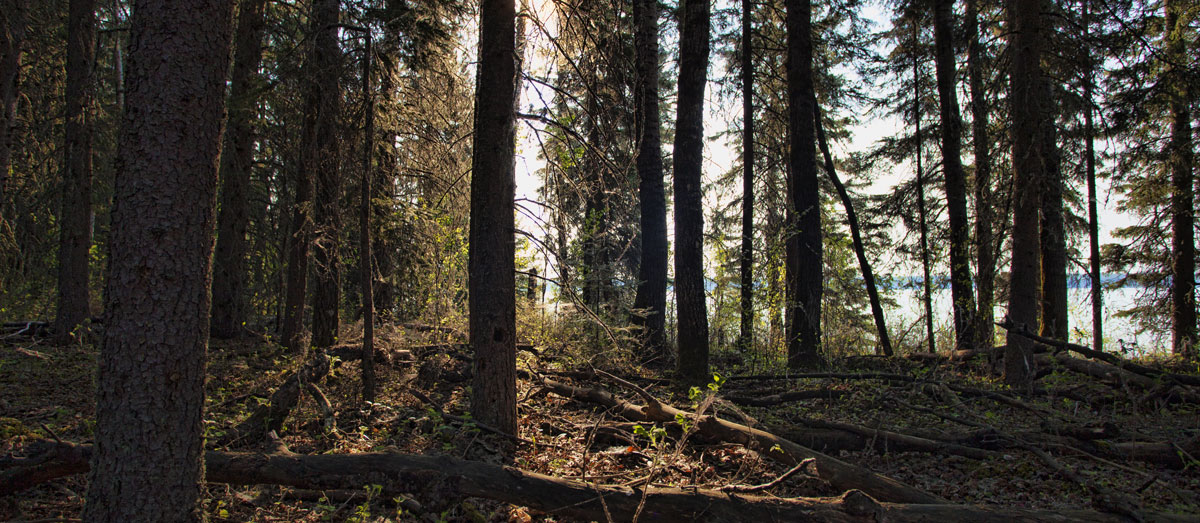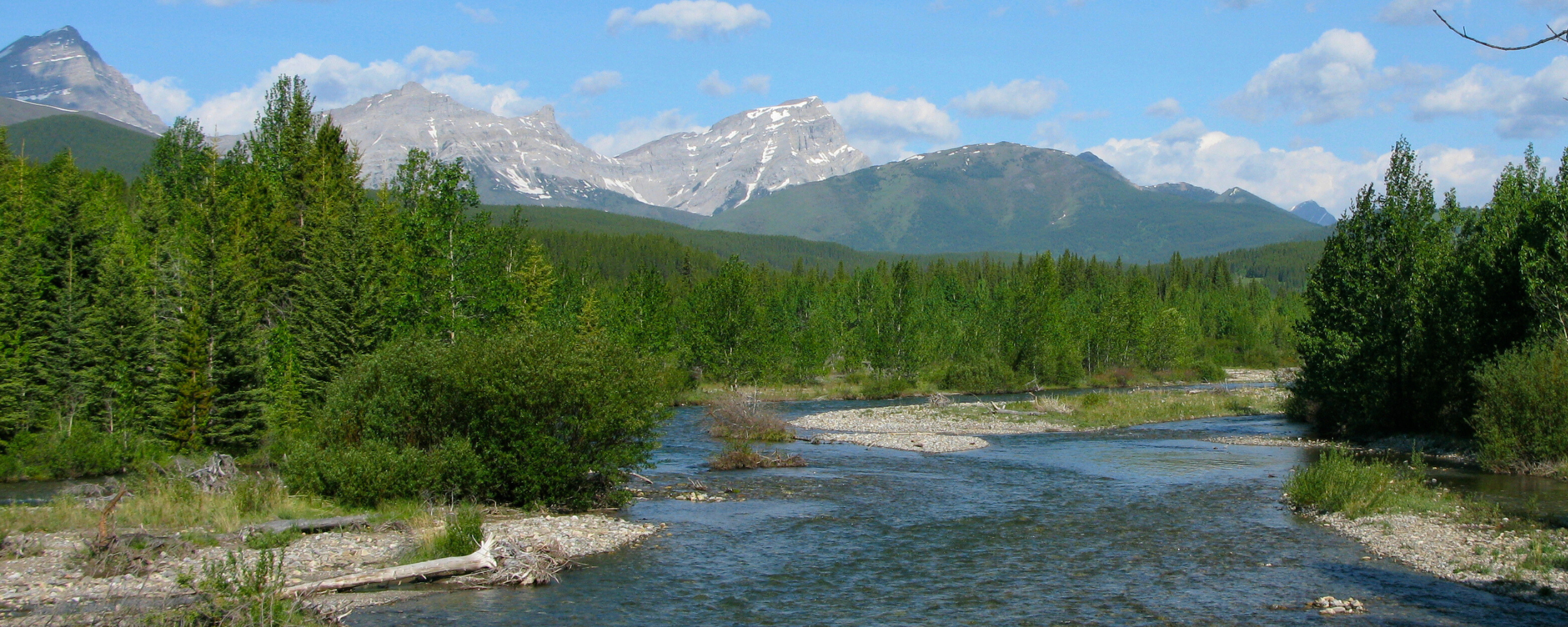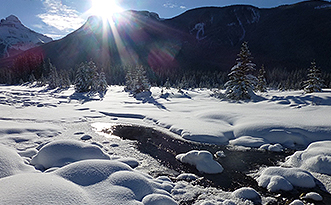By Peter Zimmerman
Parks Coordinator
CPAWS Southern Alberta
A short time ago a local Action Alert was sent to our members, asking them to let their city councilors know that any bid for the Olympics should NOT include Lake Louise ski area in Banff National Park as a venue. We also asked that any bid that included Nakiska should be conditional on staying within the existing footprint of that ski area.
While for some, the rationale for this Alert may be fairly self-evident, others may wonder as to why CPAWS has taken such a firm stand on this issue, especially given Calgary’s history of successful winter games hosted in 1988 and Vancouver in 2010.
Here are some facts and inferences that led CPAWS – after much reflection – to maintain our long-held opposition to using our parks and protected spaces for a special event of such magnitude and global attention as the Olympic games…
The current state of Banff National Park: In recent years, visitation to Banff National Park has skyrocketed. The park is bursting at the seams, and crowding, traffic, and human-wildlife conflicts have become major problems that the Town and park are already struggling to address. The most recent Parks Canada “state of parks” report, released December 2016, shows that Banff’s ecosystems are only in fair condition. In the past decade, woodland caribou have been extirpated from the park. Grizzly bears continue to struggle, particularly in the Bow Valley where they lack adequate secure habitat because the valley is crowded with infrastructure, including a townsite, highway, railway, ski areas, hotels, parking lots, etc. We should be trying to take the pressure off of Banff, not adding to it.
Olympic Games have doubled in size: The Olympic games in 2018 were over twice the size of the games held in Calgary in 1988. The games in Calgary attracted 1423 athletes from 57 nations to participate in 46 events. Thirty years on, there were 2952 athletes from 89 nations in 102 events at Pyeongchang. The effect of this expansion has made the probability of holding the games in a way that would leave only a small environmental footprint highly unlikely.
The 2010 Winter Games in Vancouver and Whistler in 2010 were considered to be a success and were held in venues that did not include parks or protected areas. Yet even in that context, the games were not without their impacts and there was considerable mitigation required to minimize their footprint and environmental effects.
Recent games: To prepare for the 2018 games, South Korea bulldozed tens of thousands of trees in a sacred forest at Mount Gariwang, site of the 2018 alpine events. Amid the protests of local environmentalists, South Korea promised to return the forest to its natural state after the games. However; provincial officials now say they want to keep the course, or at least a significant part of it, as a future “comprehensive leisure” zone. They also say it would be difficult for the province to foot the bill for the restoration project, which experts say could cost $90 million over 20 years. A new hotel has already been built on the site; another is on the way. Regional officials talk of building mountain bike courses, sledding parks, and concert halls to complement the ski course.
The 2014 winter games in Sochi Russia were as equally if not more controversial in terms of their environmental impact, with regulations being repealed to allow construction of Olympic venues within Sochi National Park, which like Banff, is also a World Heritage site. There were also allegations of illegal waste dumping, water contamination and complete disregard for habitat preservation. It was clear the construction of new infrastructure to support the Olympic games overrode any other consideration.
Canada will do better: Certainly, Canada is not Russia or South Korea, and arguably we can and would do a much better job of protecting our environment. None-the-less, the nature of the Olympic games; the global scale and magnitude, the international prestige and attention, the astronomical sums of money required, all become such significant drivers that, whatever the good intentions of the planners may be, will inevitably lead to venue expansion, additional pressure, and unavoidable adverse impacts. This is simply the nature of the Olympics, which is why they are not appropriate for a National Park, where ecological integrity is the first priority and even the small incremental increase in pressures could become threshold ones.
Risk vs conservation value: While there may be opportunities to use the games as a lens to promote conservation values or leave some lasting ecological legacy such as wildlife crossing structures, these potential positive outcomes have to be weighed against the considerable risk of adverse impacts, as have occurred in past games.
Once the games are awarded, the sheer inertia of hosting such a massive undertaking, that must conform to ever increasing IOC standards, makes “reeling in” any project scope creep, overlooked requirement, or unforeseen consequence a virtual impossibility. Once the Olympic train has left the station, there is no turning it around or even slowing it down. The best risk management tool available to protect our parks is simply to not allow the national parks to be a venue for events in the first place.
A diminished bid without Lake Louise: In both the 1960s and the 1980s CPAWS was an instrumental part of a discussion amongst Canadians of the costs and benefits of hosting Olympic events. These discussions created a divide in the Canadian public and stirred controversy across the country. In the 1960s, the public opposition to the games led to the demise of the entire Olympic bid.
In contrast, in the 1980s, the Bid Committee worked with the environmental community and other concerned groups and agreed to build the alpine venues at Nakiska in Kananaskis country. Because of these negotiations, the 1988 bid was successful.
The bottom line is that if Calgary chooses to bid on the 2016 Olympic Games, it does not need Lake Louise as a carrot, nor what would be a contentious expansion at Nakiska. Such a divisive element as these would bring could be seen as a negative aspect of any Olympic bid.
CPAWS does not oppose the Olympic games, but that is not what this is about. It’s about remaining true to our mandate of defending our treasured National and Provincial Parks. Olympic games come and go for 2 weeks every 4 years…our Parks are ours to have, or not, for a lifetime.
More Blog Posts

Speak Up, Write Out: The Power of a Local Op-Ed

Fine Issued to Forestry Operator for Erosion Control Failures


